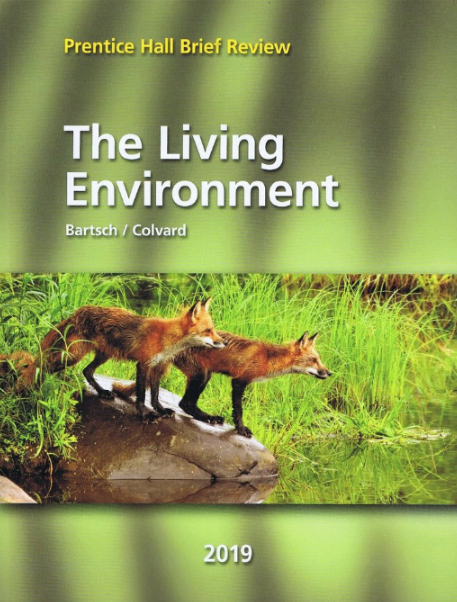Home Page
Textbooks
Prentice Hall Brief Review: The Living Environment 2019
Section 9.4: Observing Plant and Animal Specimens

Prentice Hall Brief Review: The Living Environment 2019
John Bartsch, Mary P Colvard
ISBN: 9781418292164
Textbook solutions
Chapter 1: Similarities and Differences Among Living Organisms
Section 1.1: The Characteristics of Life
Section 1.2: Cells: The Basic Structure of Life
Section 1.3: The Cell Membrane
Section 1.4: Multicellular Organisms
Page 15: Practice Questions
Chapter 2: Homeostasis in Organisms
Section 2.1: Basic Biochemical Processes of Living Organisms
Section 2.2: Feedback and Homeostasis
Section 2.3: Disease as a Failure of Homeostasis
Page 38: Practice Questions
Chapter 3: Genetic Continuity
Section 3.1: Heredity and Genes
Section 3.2: Genetic Code
Section 3.3: Genetic Engineering
Page 55: Practice Questions
Chapter 4: Reproduction and Development
Section 4.1: Types of Reproduction
Section 4.2: Cell Division
Section 4.4: Applications of Reproductive Technology
Page 74: Practice Questions
Chapter 5: Evolution
Section 5.1: The Theory of Evolution
Section 5.2: The Mechanics of Evolution
Section 5.3: Patterns of Change
Page 93: Practice Questions
Chapter 6: Ecology
Section 6.1: Organisms and Their Environment
Section 6.2: Population Interactions
Section 6.3: Energy Flow Through an Ecosystem
Section 6.4: Diversity Benefits Species and Habitats
Section 6.5: Environmental Changes
Page 116: Practice Questions
Chapter 7: Human Impact on Ecosystems
Section 7.1: Need for Awareness and Understanding
Section 7.3: Human Activities and the Loss of Diversity
Section 7.4: The Impact of Technology and Industrialization
Page 138: Practice Questions
Chapter 8: Scientific Inquiry and Skills
Section 8.1: What Is Science?
Section 8.2: Scientific Inquiry
Section 8.3: Further Science Understandings
Page 160: Practice Questions
Chapter 9: Laboratory Skills
Section 9.1: Tools for Measurement
Section 9.3: Additional Laboratory Technique
Section 9.4: Observing Plant and Animal Specimens
Section 9.5: Laboratory Safety
Page 183: Practice Questions
All Solutions
Section 9.4: Observing Plant and Animal Specimens
Exercise 31
Result
1 of 1
A scientific purpose for dissecting an organism is to further study the different layers of it in detail as well as identify the different parts of it.
Exercise 32
Step 1
1 of 2
The answer is 1. These tools are commonly used by researchers in order to properly dissect an organism for further studying. These tools, from left to right are scissors, tweezers, probe and scalpel.
Result
2 of 2
1
Exercise 33
Step 1
1 of 2
The answer is 3. When dissecting a preserved specimen, safety goggles are needed to prevent the formalin from getting into the eye, this more of a protective instrument. The scissors are needed for cutting the specimen into various sizes and the compound microscope is needed for evaluating the need for further cutting.
Result
2 of 2
3
Exercise 34
Step 1
1 of 2
The answer is 2. This instrument is called the probe. It is used to separate delicate parts of a specimen and is also a tool for pointing out structures, lifting specimens and moving intact structures.
Result
2 of 2
2
Haven't found what you were looking for?
Search for samples, answers to your questions and flashcards

unlock
